Whether you have rosacea or you just have red undertones, it can make a world of difference to have a hair color that complements your skin rather than working against it.
So no matter why you blush, you may wonder what the best hair colors are to minimize redness in the face and the colors that look good with rosacea.
What’s Causing the Redness on Your Face?
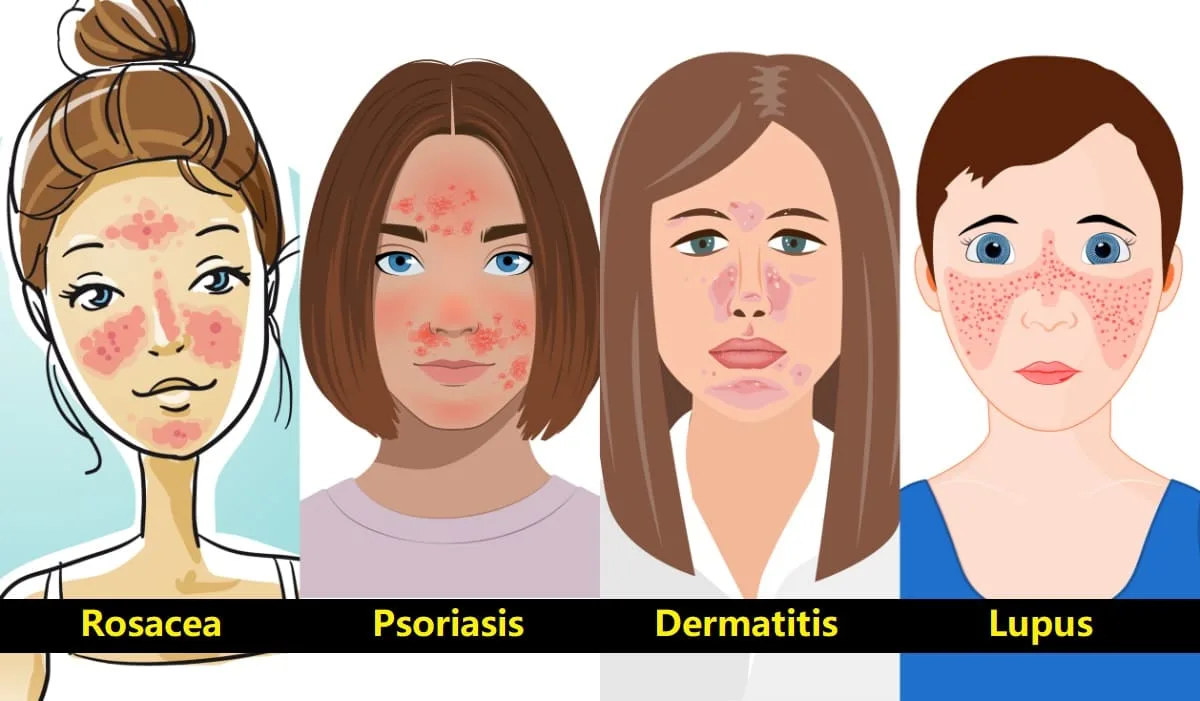
Many different things cause facial redness. The ten leading causes of facial redness include:
- Seborrheic dermatitis: This skin condition produces a red rash that appears oily.
- Rosacea: As many as 14 million Americans have rosacea, a skin condition that causes redness and can worsen over time.
- Allergic Reactions: Allergic reactions and skin irritations can result in contact dermatitis. Fortunately, these reactions are temporary and would not be a reason to change your hair color.
- Reaction to Medications: Occasionally, medications may result in redness in the face. These reactions are also temporary.
- Atopic Dermatitis: Atopic Dermatitis (more commonly referred to as eczema) can cause a rash that results in redness.
- Psoriasis: Psoriasis is a skin condition where your skin produces too many skin cells too quickly. This results in a buildup that looks scaly and red. Psoriasis can sometimes occur on the face, but it doesn’t usually.
- Spider Veins: Spider veins are the result of skin damage. They can cause your face to appear red and covered in veins.
- Shingles: Singles is a temporary skin condition that can cause a painful rash anywhere on your body.
- Lupus: Lupus is an autoimmune disease that can occasionally result in reddened skin.
- Cancer (very rare): T-Cell cutaneous lymphoma is a rare cancer that can result in blushing and redness in the face.
If you have redness that you cannot explain, you should consult your general practitioner or a dermatologist right away to rule out anything dangerous.
What Does Rosacea Look Like?
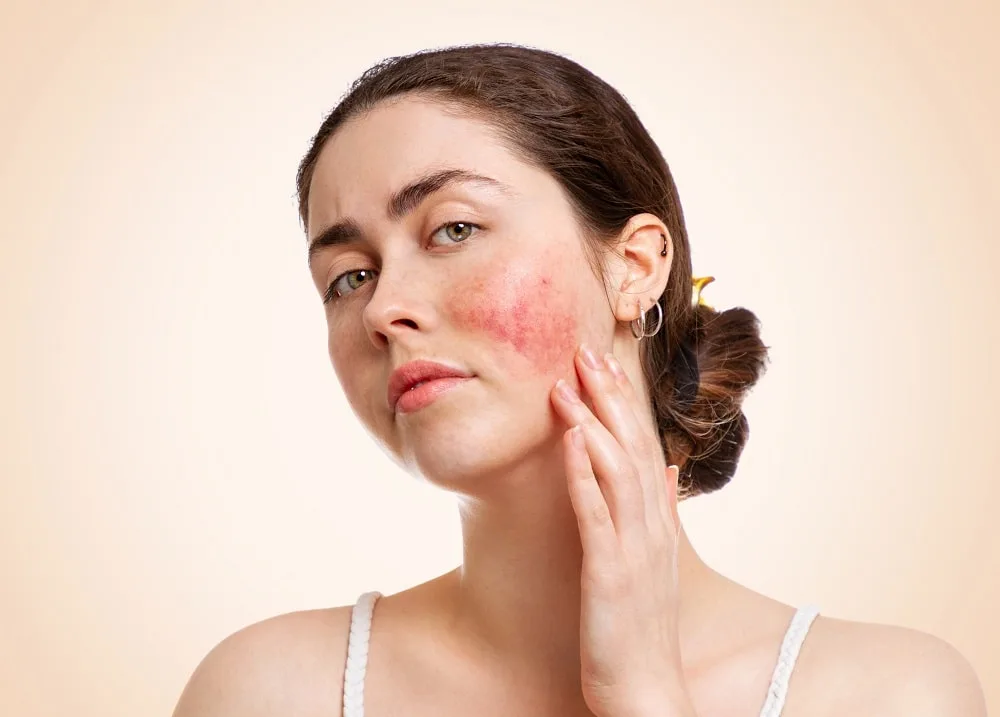
Rosacea is a skin condition that results in a very red face. There are three types of rosacea and several symptoms to look out for.
Types of Rosacea
There are three main types of rosacea, including:
- Erythematotelangiectatic rosacea (ETR)/ Subtype One: This subtype usually appears as facial redness, visible blood vessels, and blushing.
- Papulopustular (acne)/ Subtype Two: This rosacea usually affects middle-aged women and usually appears as acne breakouts.
- Rhinophyma/ Subtype Three: This is the rarest form of rosacea. It affects men more than women and usually is only seen in combination with another type of rosacea.
- Ocular rosacea/ Subtype Four: This type of rosacea usually appears around the eyes. Developing ocular rosacea signifies that you may develop another type of rosacea down the line.
Symptoms of Rosacea
All types of rosacea appear differently, but they all have some symptoms in common. These symptoms include:
- Sensitive skin
- Redness
- Visible blood vessels
- Swelling
If you’re dealing with any of these symptoms and believe you may have rosacea, you should consult your general practitioner or a dermatologist as soon as possible. You can learn details about Rosacea here.
How Can I Minimize Redness In My Face?
There are many ways to mitigate redness in the face. Using makeup or concealer may hide some redness, especially if you add a color-correcting cream underneath with blue or green undertones.
You can also improve your lifestyle to make your face skin less red. Things like eating a healthy diet, getting enough sleep, and exercising regularly all help to reduce inflammation in the face.
However, as rosacea can come with sensitive skin and is easily irritated, you may want a way to appear less red without having to put anything on your skin.
If so, one of the best ways to look less red—rosacea or otherwise—is to change your hair color. You may inadvertently emphasize your skin tone if your hair is a very different shade than your skin.
To appear less red, you can change your hair tone to a more complementary color with a warm undertone within three shades of your skin.
However, you should avoid dyeing your hair the same color as your skin, as you may look washed out or even redder.
Best Hair Colors for Rosacea and Red Skin
As a general rule, it is best to avoid colors that contrast strongly with your skin tone. Strong contrasts may cause your hair to emphasize your redness rather than detract from it. You can also use hair colors to make your face look less red.
Because of this, you should stick to warmer colors. The best hair colors for red skin and rosacea have warmer undertones, like gold or orange.
Copper and ginger hair may seem counterintuitive to mitigating the redness in your face, but they can actually be effective. Many natural gingers have peachy or red undertones, so your redness won’t look out of place.
When choosing colors that make skin look less red, try to choose a hair color that is close in color to your skin without being the exact same color.
Matching your face will wash you out, but the contrast provided by a very different color will make your skin stand out even more.
If you really want to avoid red-toned hair colors, you can also choose colors with neutral undertones. These will not hide the redness in your appearance as much, but you will avoid drawing more attention to your blush.
Warm Blonde
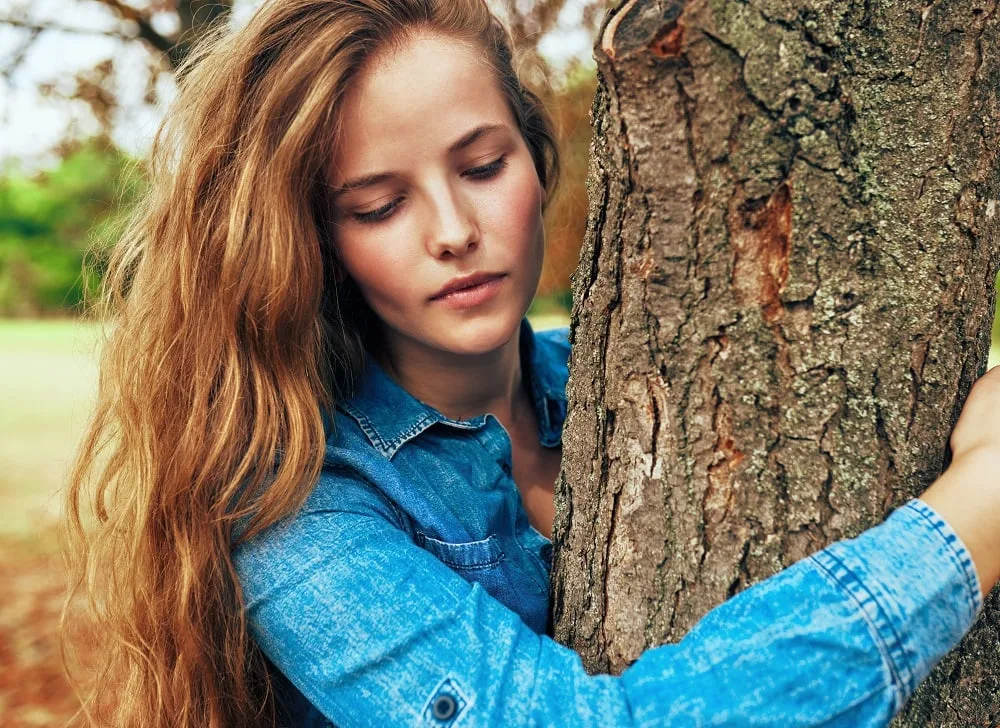
Blonde can be excellent hair color to neutralize red skin if you’re careful. If you have gold undertones or have similarly toned skin, it’s best to say away from this option.
If you want to go blonde, look for warm blondes like gold, strawberry blonde, honey, and sand.
Warm Brown
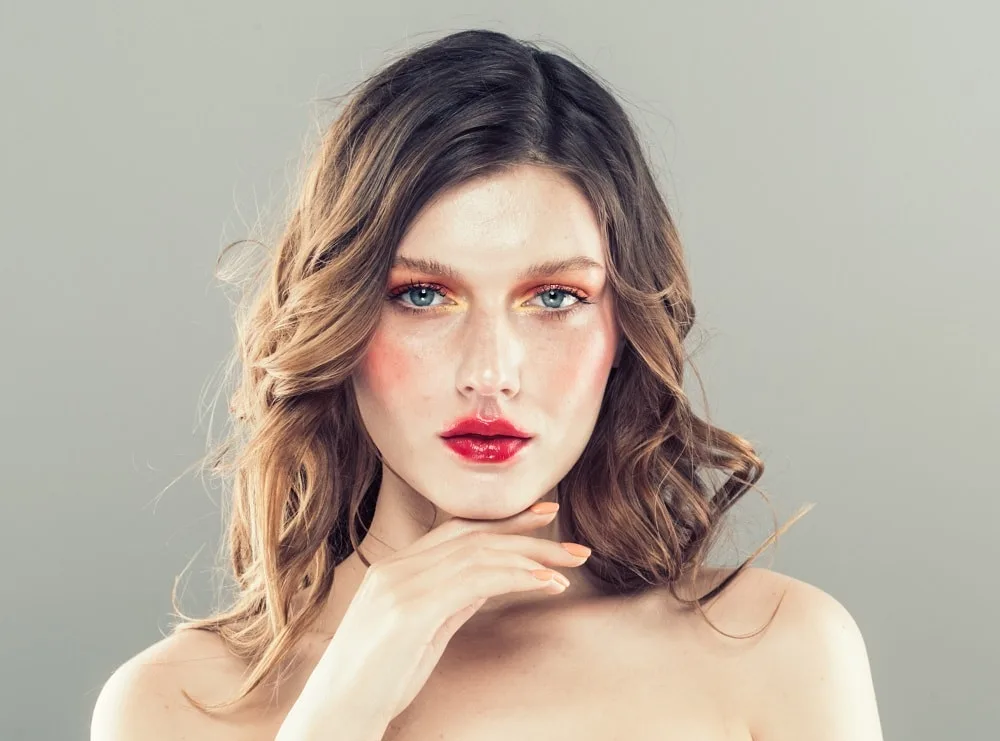
Warm brown can transform your face if you have medium or tanner skin. The warmth of the brown will keep the red from standing out too much, but the brown will provide enough contrast that you don’t wash out.
There are many shades of warm brown that you could use, ranging from honey brown to caramel to cinnamon. Any color in the warm brown range should work to de-emphasize the redness in your face.
Red Brown
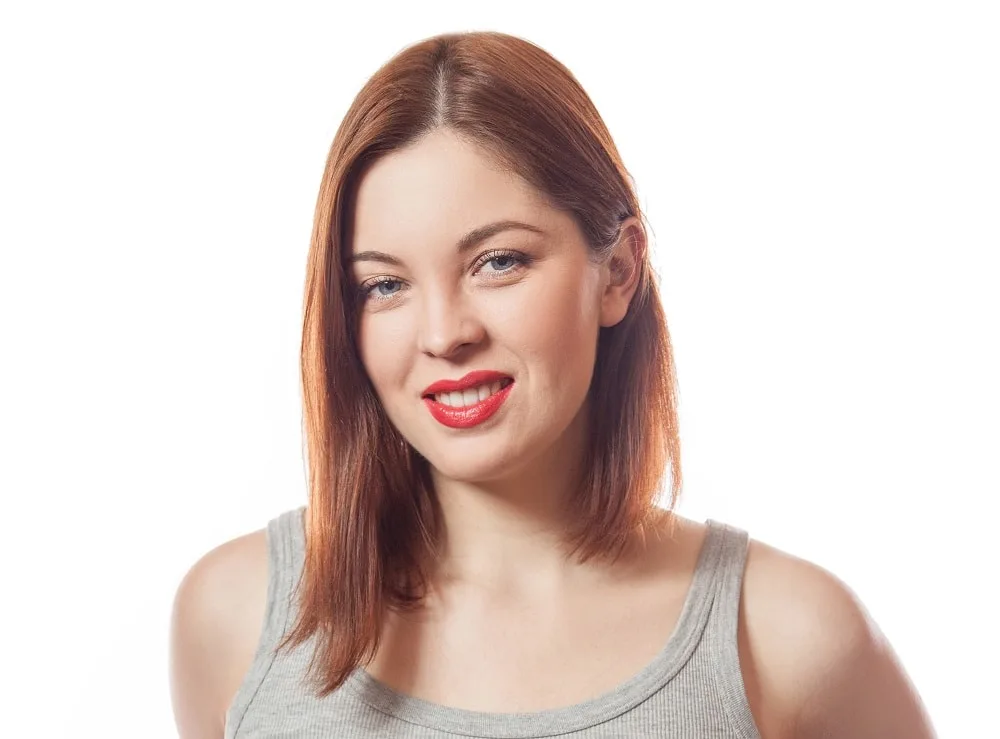
Red-brown is one of the best choices on this list if you have a very fair complexion.
Choosing a light red-brown, like golden bronze or light brown copper, will provide you with plenty of contrast without drawing out more redness from your face.
Neutral Blonde

Neutral blonde is a good choice for those with red complexions, but it can be very difficult to achieve in the salon chair.
You should be cautious about accidentally going cool, which will emphasize your complexion instead of masking it.
Neutral Brown
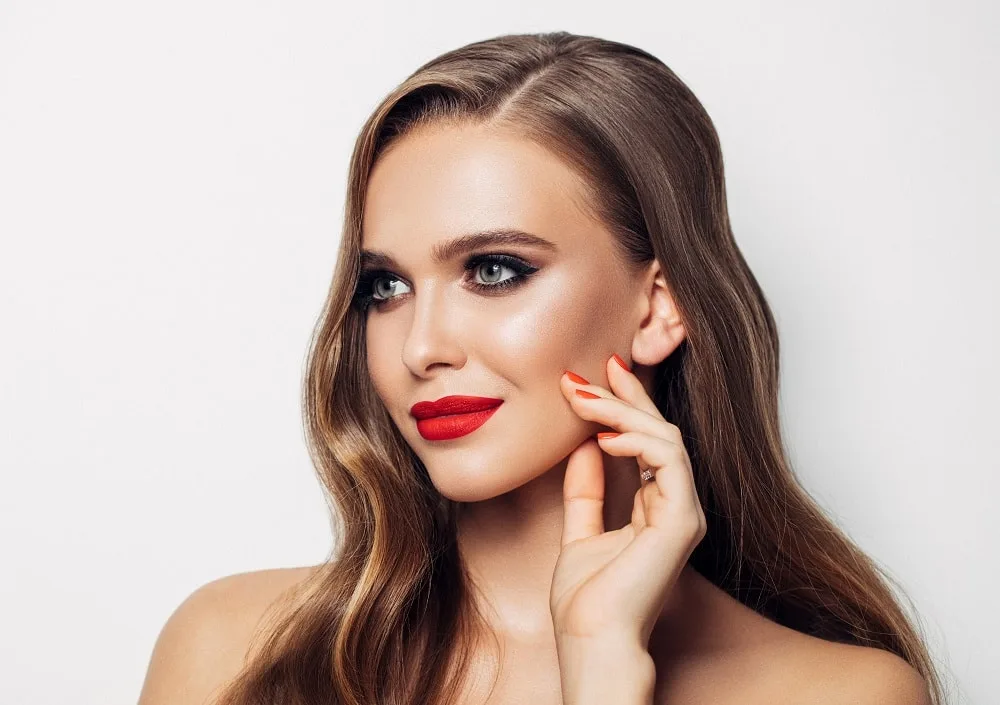
It can be difficult to dye the perfect shade of neutral brown, but if you can nail it down, you can transform how you look at your complexion.
If you’re looking for a neutral brown, it’s important to avoid accidentally choosing a cool brown, which will give you an opposite look.
Red
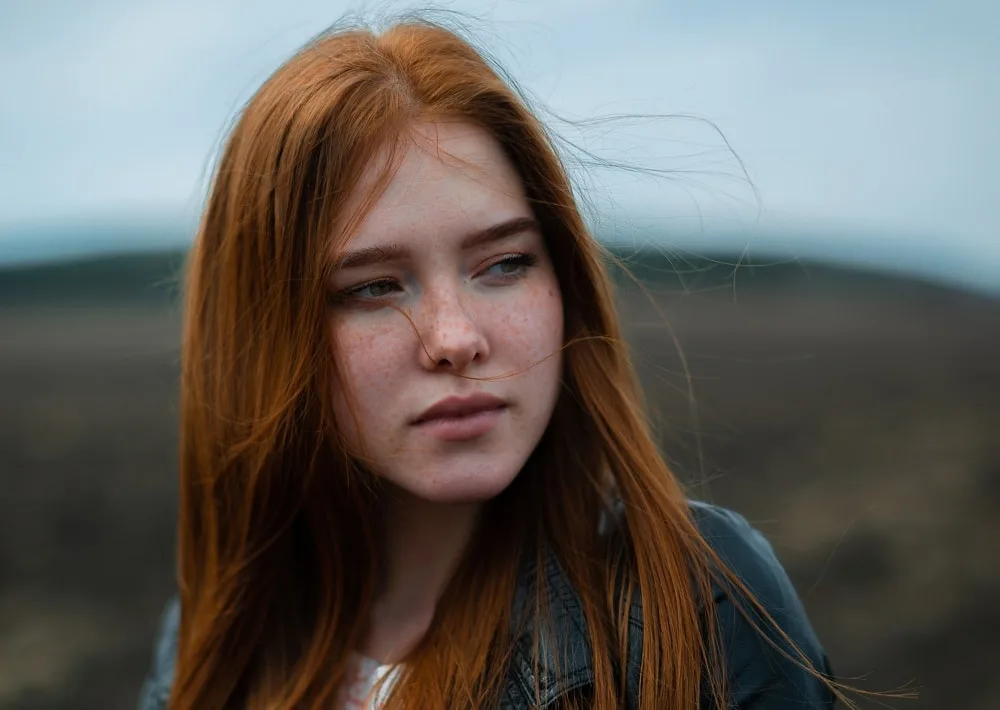
Red is another excellent choice for those with redness or rosacea. Many natural redheads have redness or pink undertones, so red will prevent too much contrast that emphasizes the skin.
While red can look natural and beautiful for those with red skin, if you choose to dye your hair this color, be cautious not to choose the same tone as your skin flushes.
Selecting a shade too close to your complexion will make the redness stand out much more.
The best way to prevent matching your blush color is to go with a red a few shades darker than your face or an orange-brown tint.
Copper
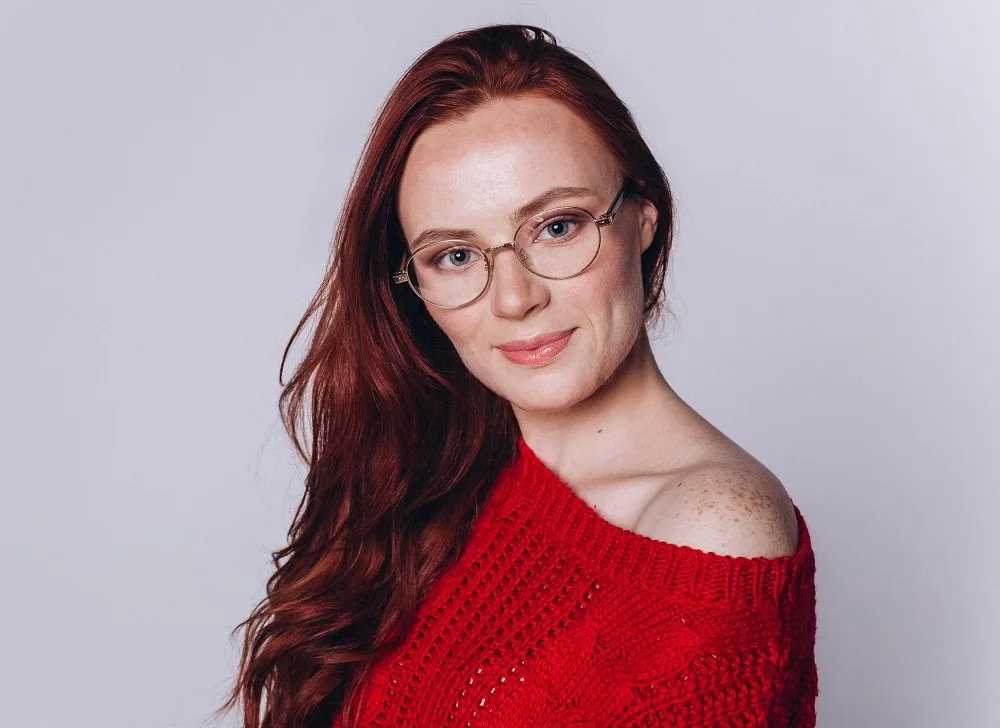
While it can be difficult to nail down this color in a salon, copper is one of the best choices for those with rosacea or redness.
Copper contrasts pale skin while complementing your redness instead of fighting it.
Do’s and Dont’s
Here are the dos and don’ts to follow for choosing a hair color when you have redness in your skin.
DO’s
- Choose a color with a warm undertone. Matching the undertones in your skin with your hair will make your skin much less noticeable.
- Use the same undertone as your skin.
- Stay close in tone to your face. It is best to stay within three shades of your skin tone.
DON’Ts
- Match your skin exactly. Matching your skin will wash you out and make you look even redder.
- Choose a color with a cool undertone. Cool undertones will emphasize the redness in your skin, not hide it.
- Choose a color far away from your face. By choosing a color drastically different from your skin (such as dark brown with a pale complexion), you will emphasize your skin tone even more.
So, What Hair Color Looks the Best For Rosacea?
The best hair color for rosacea depends on your complexion. Try to stick to warm or neutral colors within three shades of your skin.
Make sure not to match your skin to your hair, or you will appear washed out and even redder.
